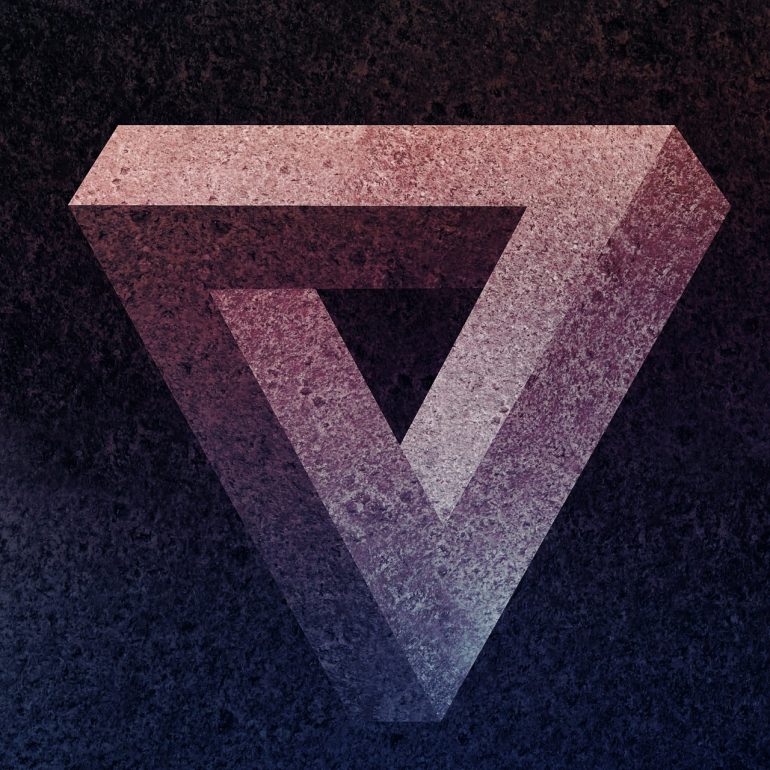Optical illusions have long captured our imagination with their mind-bending tricks on our perception. From impossible objects to shapes that seem to vibrate or move, illusion art intrigues us by exposing the subjectivity of what we see. In recent years, graphic designers have increasingly embraced optical illusions as a fresh and stimulating style for their projects and personal work. But what’s behind the surging interest from designers? Keep reading to find out.
The Creative Challenge of Deception
For designers seeking inspiration or wanting to flex their skills, few projects offer more creative freedom than crafting optical illusions. Unlike more conventional graphic design that focuses on clarity in visual communication, illusion art is all about deliberately deceiving the eye.
Designing a convincing optical illusion requires carefully balancing multiple elements like colour, line, dimension, negative space, and perspective to construct the right perceptual triggers in the viewer’s mind. It’s a complex challenge that demands both solid foundational design abilities and plenty of experimentation through trial and error. When a designer pulls it off, the impact and “wow factor” is hugely rewarding.
Expanding Perspectives on Reality
On a deeper level, illusion imagery resonates with graphic designers because it encapsulates a recurrent theme in visual arts – exploring different vantage points, perceptions, and expressions of reality. Surrealist painters like M. C. Escher and Salvador Dalí brought dream symbolism and subconscious perspectives into their work to reframe our idea of reality. Artists like Bridget Riley and Victor Vasarely used high-contrast patterns to trigger sensations of motion on static canvases. Today, illusion artists produce designs that question reality by presenting multiple conflicting viewpoints at once.
For graphic designers, incorporating optical illusions becomes a way to suggest realities beyond the image frame or defy the usual limits of static graphics to engage viewers’ imagination. The style also brings abstract ideas and subjective experiences, like visual perception itself, into the designer’s toolkit for conveying messages and emotions. This is something that not a lot of graphic designers can do, and it’s also really fun to create. Standing out from the crowd while enjoying your work is something that many graphic designers appreciate.
Fresh Approaches to Communication Goals
While deception may be the means, optical illusions still serve communication goals that align with design principles. Many iconic illusion graphics like the impossible triangle (otherwise known as the Penrose Triangle) or café wall illusion trace back to scientists studying quirks in visual perception. Today’s designers co-opt these effects for more artistic aims yet still leverage the innately attention-grabbing nature of such odd imagery.
Unexpected visuals that appear to bend reality offer exciting new avenues for designers to catch eyes, prompt curiosity, communicate memorable ideas, or encourage closer inspection according to the purpose at hand. For brands wanting to highlight uniqueness, illusions can suggest forward-thinking approaches inside and outside the box. Playful illusions also lend friendly, accessible tones for public information and community campaigns. Even subtle touches of the style introduce intrigue and vibrancy to otherwise ordinary designs.
Pushing Creative Boundaries
Optical illusion art represents a rich design niche that top graphic artists continue pushing into new creative territory. Digital tools now help generate photorealistic distortions once impossible physically. Animators bring illusions to life with transforming shapes and perspectives in motion graphics. Spatial installations like the blocked-out room at Canada’s McMaster Museum of Art scale optical effects to architectural environments we can physically enter.
Yet, as technology expands the scope for illusion art in design, the old-school principles behind successful tricks on the eye endure. Graphic designers may have software to mimic effects at the click of a button, but they need true visual craftsmanship to imagine and compose designs that fully captivate viewers. Mastering the style calls for just as much foundational art knowledge as other fields like typography or composition – another draw for talented designers seeking to grow artistically.
Optical illusion art is an appealing niche within the graphic design that blends science and art to create perceptually intriguing imagery. Like architecture or product design, crafting seemingly impossible yet believable visuals requires left-brained spatial reasoning and logic as much as right-brained creativity. The analytical side of optical illusion design offers another avenue for detail-oriented graphic artists to exercise their skills.
A Change of Perspective
From M.C. Escher’s impossible staircases to Brusspup’s mind-blowing YouTube animations, illusion art offers graphic designers a portal into unseen worlds that engage our senses, change perspectives, and expand reality beyond the canvas. By tricking the eye, optical illusions reveal deeper truths – that seeing itself is subjective, constructed by our brains as much as light entering our eyes. Incorporating such fresh visual metaphors creates new avenues for designers to connect profoundly with modern audiences. In graphic design’s continual quest for originality, illusion art’s ability to stop viewers in their tracks continues, making this deceptive style irresistibly compelling.





